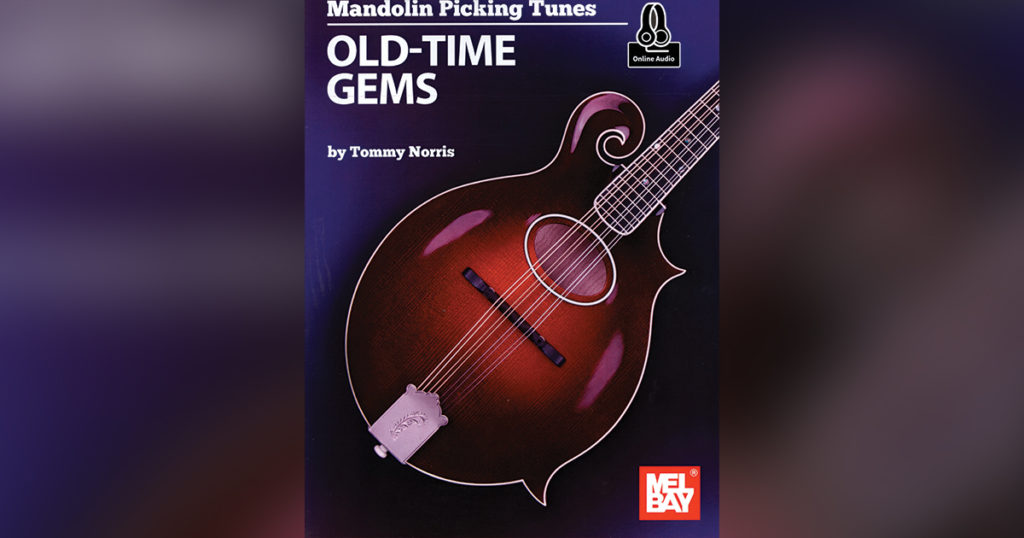Mandolin Picking Tunes—Old-Time Gems
Mel Bay Publications
Mel Bay Publications has excelled at providing quality instructional material for stringed instruments for 0ver 75 years. One of their newest offerings for mandolin players displays the quality of material and presentation that students of acoustic music have come to love from this music publisher.
Mandolin Picking Tunes—Old-Time Gems provides mandolin students with classic picking tunes and songs in arrangements that vary from beginning to advanced. Some of the fiddle tunes that are offered—“Angeline The Baker,” “Cherokee Shuffle,” “Grey Eagle,” “Jimmy In The Swamp,” “Over The Waterfall,” and “Spotted Pony” are fairly straight-forward melody-based, single-string arrangements that would be approachable by beginning to early intermediate mandolin players. The arrangement of “Bonapart’s Retreat” is also approachable, but beginners will have to pay close attention to several long strings of sixteenth notes that alternate melody notes with open strings in rapid succession.
The fiddle tune “Texas Gals,” is mostly provided as a single string arrangement, with some periodic double stops thrown in here and there. The slower tempo tune “Cold Rain and Snow” also mostly includes single string playing, but also adds some up-the-neck movements and few chordal strums and double stops appear later in the tune arrangement.
The arrangement of “Spotted Pony” starts out fairly easy, but as the tune progresses more advanced techniques are included. For example, there is one repeated melodic phrase where the first time the phrase is encountered the melody notes are played as eighth notes on the G string. Each melody note is followed by two sixteenth notes on the same string that repeat the original note. The next two times this phrase is encountered, the timing is the same, but the two sixteenth notes that appear between the melody notes are played as open notes on the D string. The last two times this phrase appears, the melody notes are played as sixteenth notes on the G string and they are each followed by three sixteenth notes on the open D string. All that to say that in some of the tunes that are presented, the technique is relatively easy at first and then, as the arrangement progresses, the author starts to build in more difficulty to add a bit of challenge.
Many of the other tunes that are presented—especially those based on vocal songs—are arranged such that more than one string is played simultaneously for a good portion of the arrangement. This style of playing is included in songs like “Don’t Let Your Deal Go Down,” “Darlin’ Corey,” “Handsome Molly,” “I Never Will Marry,” “Roving Gambler,” “Long Journey Home,” “New River Train,” “Red Rocking Chair,” and “Sittin’ On Top Of The World.” Some of the multiple string passages are such that the melody notes are played along with open strings. Others are either double stops or full chord strums. In the preface, the author describes “Darlin’ Corey” as using open A and D strings as drones, creating a mountain dulcimer sound. He also describes the technique used in “Jimmy In The Swamp” and “Roving Gambler” as “double pitching” on adjacent strings and says that, “These unison pitches really make the mandolin sing.”
The 18 arrangements presented here form a very nice selection of songs and tunes for mandolin players to explore. The tunes are familiar enough that you will likely find other pickers at jam sessions who know them. They are all presented in both standard music notation and tablature and downloadable audio files of the author performing the arrangements are also available if you purchase the book. This book is available at melbay.com.

